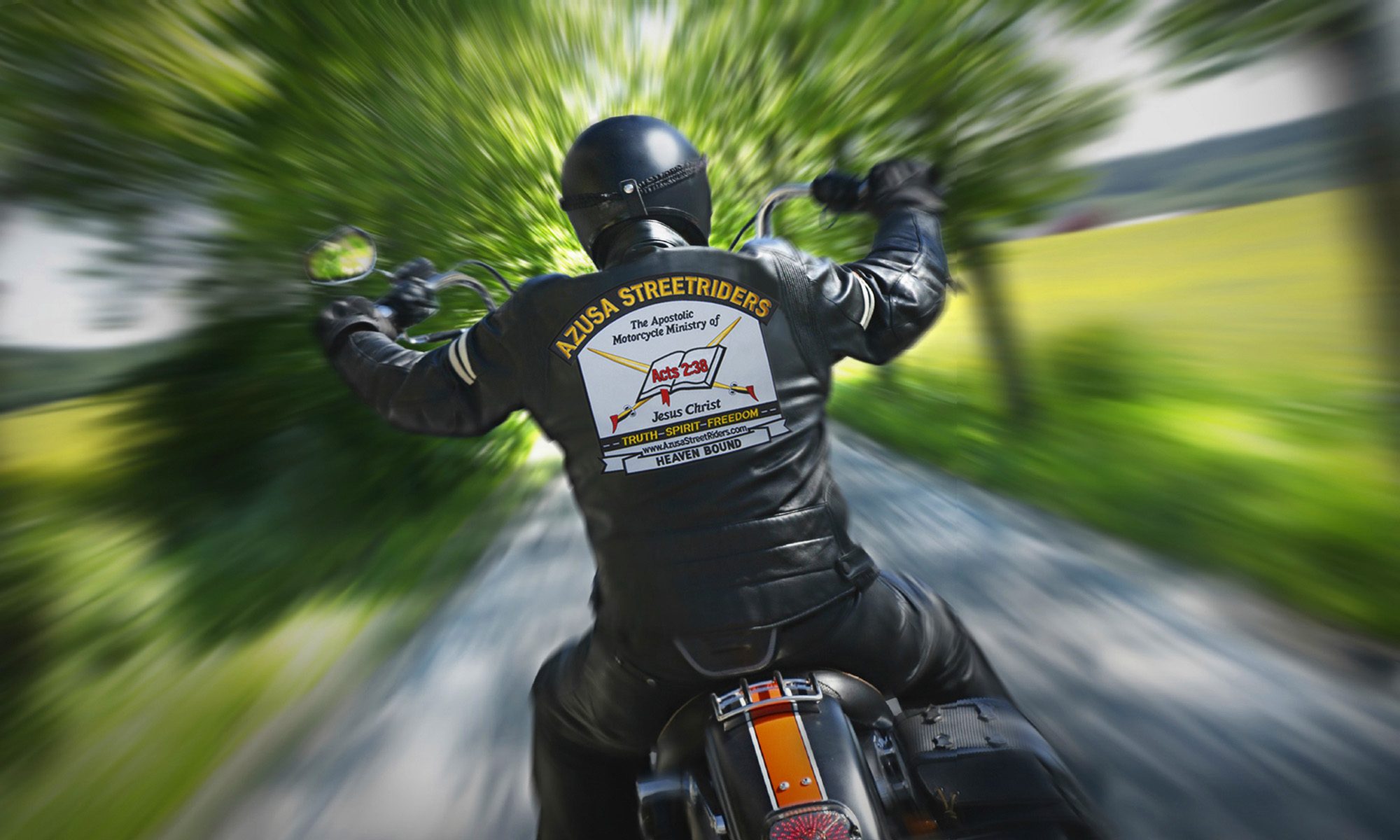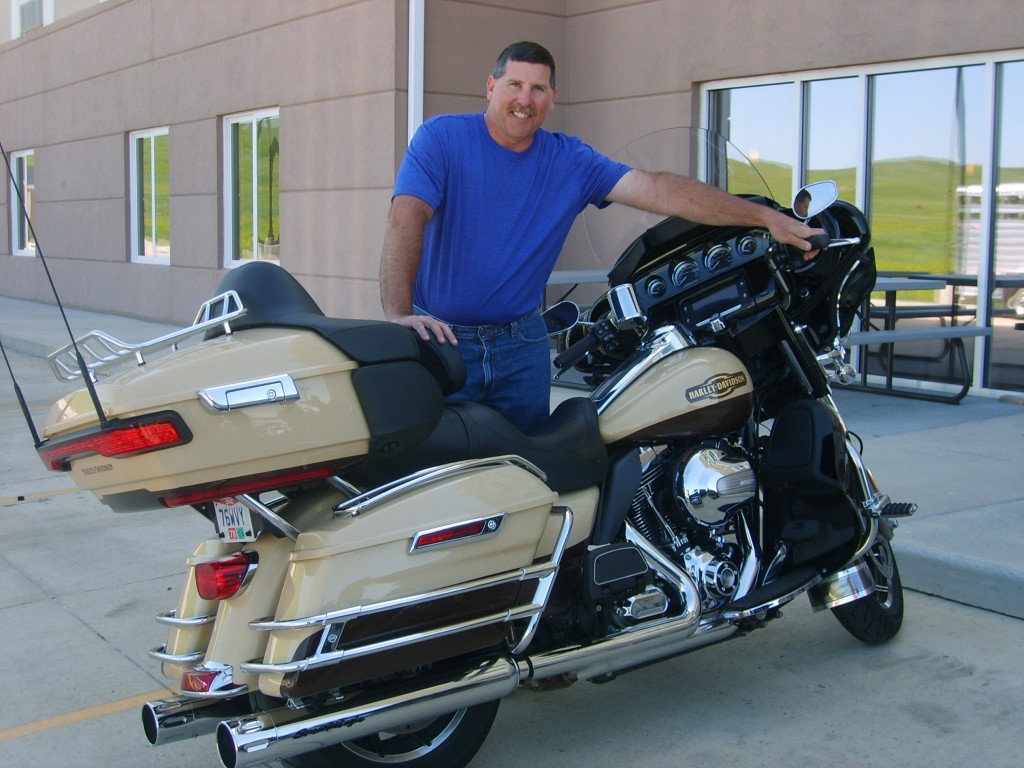Being Prepared for All Types of Riding Weather
Let’s take a look at how riding weather can affect your plans and how you can manage with it. Rain, ice and snow are the most obvious weather related issues you can run into while on the bike, but heat, wind, altitude can also adversely affect your trip. Below are some tips on how to cope with weather while on the road.
RAIN is by far the most common problem for most of us and here are a few things that can help make your ride safer. Do not ride in lightning storms. They can be pretty fierce. When lightning starts flashing, head for cover…time for a short break. Since your bike is not grounded, it is very unsafe to ride while lightning is present. If you are on the road, exit immediately to a gas station or other covered area. If that’s not possible, the next best cover can be a highway overpass if there is no other safe place to stop. Overpasses stay relatively dry and generally you can find a nice place to rest. Just pay attention to possible water flows and flash floods and Do not stay beside your bike when stopped. Walk a few feet away from the road in case a driver not paying attention comes to close to you and your bike. Bikers have been hit and killed under overpasses trying to wait out storms. Activate the four way flashers on your bike and keep them on so motorists can see the bike.
When you must ride in the rain there are several things that you can do to make things safer. First is rain gear. Try to buy 100% waterproof gear. Pack it so that it is easy to get to in your bags. Waterproof boots are really good to wear. If your feet get wet and cold, you can become miserable very quickly and this causes you not to be focused on the road. Gloves…Leather gloves get water logged real fast in rain. You can spray your gloves with leather water proofing before the ride to help, but this is only a temporary fix and your fingers and hands will soon become cold and wet. It’s better to have a pair of waterproof gloves. They work great I keep a pair with me on all rides. Or you can buy a pair of cheap rubber kitchen gloves they also work well and if you get large ones, you can put them over your leather gloves. You may get some grief from fashion-Nazis, but safety is the focus here. Absolutely the most important thing while riding in bad weather is to slow down. Ride with your four-way flashers on and always have your high beam light on. Never ride faster than the distance you can see. If you can’t stop in time you’re going too fast. I made this big mistake on my trip out west to the ASR National Rally in Colorado. Instead of slowing down while riding in a storm, I hit some oil patches and the rest was…well no more road trip…no more bike. I did not take my own advice. A lesson learned the hard way!
Ice and snow? Most riders just flat out avoid it. They say, If there is any snow or ice on the roads it just makes no sense at all to be out on the bikes. And then there is me! I ride in the winter here in the snow belt in NE Ohio. It’s not that bad! Some of my best rides have been in the winter months. I always ride slow and do not ride when it gets icy. Wait for the road crew to clean the roads. Also, I do not ride at night during winter months. Heated gear for winter riding is a must if you want to stay out and ride all day. If you don’t have the heated gear, dress for the weather and make frequent stops to warm up.
Heat can get nasty; from the dry heat that roasts you in the deserts and prairie areas to the “so humid you feel like you’re riding through a wall of water” type heat of the east and south east. There are three things to remember…water, water, water. Dehydration can knock you down quickly while on a bike. Moisture is wicked away by the wind and further dehydrates you without you even knowing it. The hot dry areas can bake you with the wind and dry heat. Opening clothing and helmet vents to allow air when the temperature is over 100 degrees can create a blast furnace effect, so close up and cover up to keep the sun off as well. Try to take breaks more often in hot riding weather and again, drink a lot of fluids. It’s good to have a moisture wicking shirt on while riding during the hot months.
Cross winds can be difficult to handle. Sometimes you spend hours leaning into them as you ride. It can become physically exhausting. Most motorists don’t even understand what wind does to a bike, from simple head on winds that just knock down your speed to winds that blow off the 18-wheelers and buffet you around in the lanes like a jumping bean. Its best to slow down a bit so you have full control of your bike and give any motorist some additional room. If you are on a four lane highway and have to ride in hard cross winds. Move your bike into the left lane. Then take up the middle of that lane to give yourself more room to handle the cross winds and ease the limit of the passing winds by the other motorist now passing you on the right lane. This is safer for all.
Altitude is something that can cause all sorts of interesting situations. If you are cruising through the Smokey Mountains or the White Mountains in the East, the elevation changes are not too drastic. At about 6,000. Going up to the mountain peaks from there is not a big elevation change. However if you are out West and go from sea level to 10,000 feet, that is a big change. At over 14,000 feet at Pikes Peak in Colorado, you will need to be aware of altitude sickness and less oxygen. Take your time when you ride in the mountains and slow it down. Taking breaks often as you climb will help reduce those effects. Also consider temperature changes and storms that can come up quickly. Always pack the right gear.
By being prepared for all types of riding weather in the different areas you ride in, you can avoid hazards and still enjoy awesome rides. Wherever you ride, I suggest you watch the Weather Channel forecast before you head out.
Michael Theodore
Azusa StreetRiders National Road Captain
Latest posts by Michael Theodore (see all)
- Happy New Year 2024 - December 31, 2023
- Letter from the Pres. - December 31, 2023
- “17 INCHES” - December 30, 2023


Good stuff Bro Theo. Love the picture!
Thank you bro Showalter 🙂
being a fellow Buckeye,from Canton Ohio I know what you’re talking about the cool weather in bad conditions I have since moved south since 72 now I guess I’m kind of a Fairweather operator I don’t like getting on the ice and snow if I don’t have to good post enjoy reading it brother Tim